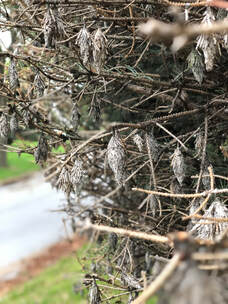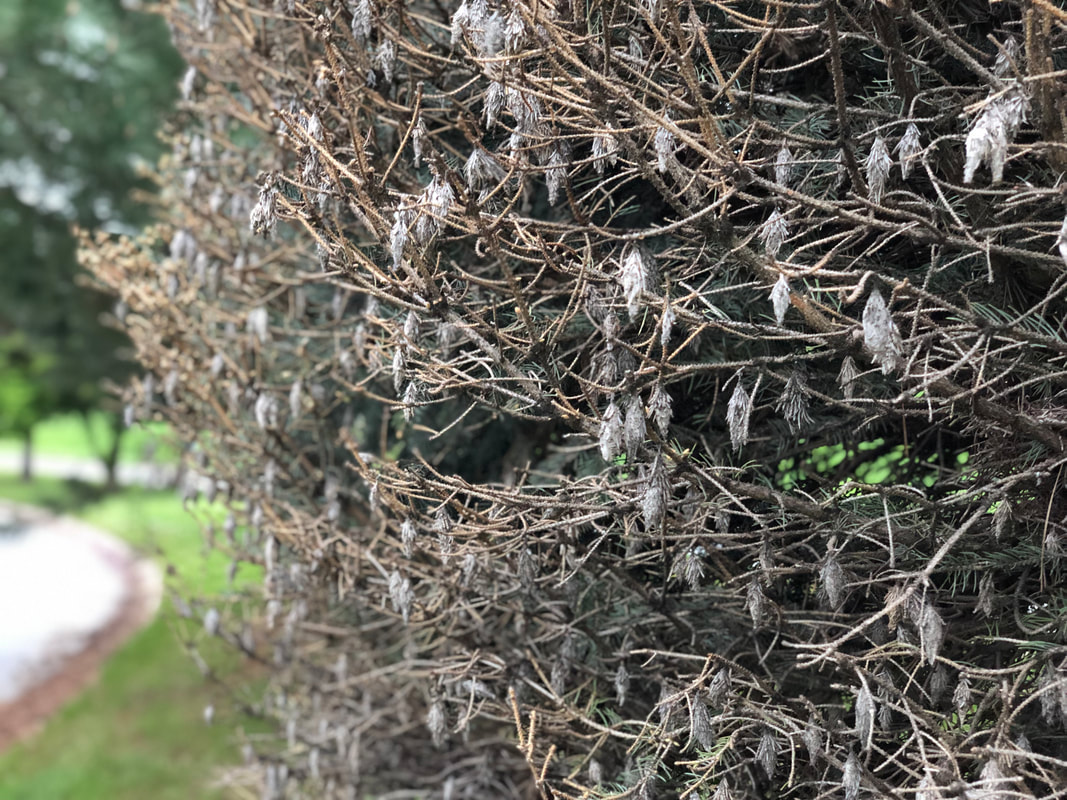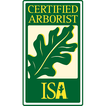|
Bagworms. Everyone’s favorite little defoliator, right? These clever moths begin life as tiny caterpillars and use the foliage of trees and shrubs to protect themselves so they can mate and create even more bagworms. They can be extremely destructive, and their cone-shaped cases oftentimes go unnoticed as "pinecones" or some other doo-dads that almost pass for something that belongs on the tree!
Can bagworms kill my trees and shrubs?YES - Bagworms can disfigure or even kill evergreens in a hurry as they feed on needles. If you have a minor infestation of bagworms, pick off the cases and throw them away in a sealed grocery bag, place in a bucket of soapy water, or burn them if that gives you satisfaction. If your trees have more than a few however, give us a call so we can perform properly timed insecticide sprays. Remember, every case can have 300-1000 eggs, so you don’t want the population exploding from one year to the next!
How does Arbor Aesthetics manage bagworm infestations?Arbor Aesthetics offers a two-time foliar spray treatment of either Permethrin or Bifenthrin insecticide while the larvae are actively feeding on your trees and shrubs. We closely monitor bagworm larvae activity so the timing of the treatments is most effective. We recommend repeating this treatment annually for at least 2-3 years before re-evaluating for control.
15 Comments
Johanna Culver
4/21/2020 11:18:55 pm
Just want to say that one of these lil bastages even built a cacoon on my fence gate (made out of wood)
Reply
4/29/2020 01:30:58 am
The final estimate will depend on the size and condition of the tree, as well as, the location, risk-level, quantity, and so on.
Reply
7/14/2020 08:33:00 am
Thanks for providing this information. Our team learned a lot from this material and will incorporate it into our daily routine. We offer <a href="https://www.treeremovalcostamesa.com">tree service Costa Mesa</a> if you are ever in our area.
Reply
7/22/2020 10:33:34 pm
These destructive insects attack many species of tree or bush but are most often found on conifers like juniper, pine, arborvitae, cyprus, cedar, and spruce. They’re called “bagworms” because after the larvae feed on plants and trees, they encase themselves in cocoon-like “bags” constructed from twigs, leaves, and self-spun silk.
Reply
3/23/2021 07:06:02 am
Hello, i think that i saw you visited my website so i came to return the favor? I’m trying to find things to improve my site!I suppose its ok to use some of your ideas!!
Reply
3/29/2021 09:45:18 pm
Thank you for being such a reliable source of info when other sites are already filtering their contents (what to go live and not). Im disappointed with them. But you're blog is still here so, yay!
Reply
4/6/2021 07:30:20 am
Some really nice and useful info on this web site, also I conceive the design and style holds good features.
Reply
5/25/2021 08:40:54 pm
This is very common on our area. You can find them on walls, woods and etc. Though they are not numerous enough to be called invasive.
Reply
5/26/2021 09:17:42 pm
The cone like "body" of this worms are pretty unique. But they must be controlled if there are quite a lot of them on your garden.
Reply
6/14/2021 01:25:52 am
Amazing that you share this informative blog, Really looking forward to read artical like this
Reply
12/7/2021 10:33:18 pm
The cone like "body" of this worms are novel. Yet, they should be controlled in case there are a considerable amount of them on your nursery.
Reply
1/11/2024 09:31:10 am
Thanks for the insightful information on bagworms and the potential damage they can cause. The details about the species most at risk and the best time for sprays offer useful guidance. The Arbor Aesthetics approach with two-time foliar spray treatment is a proactive method to address bagworm infestations.
Reply
Leave a Reply. |
AuthorAmy Grewe, Certified Arborist & Co-Owner Categories
All
Archives
April 2024
|







